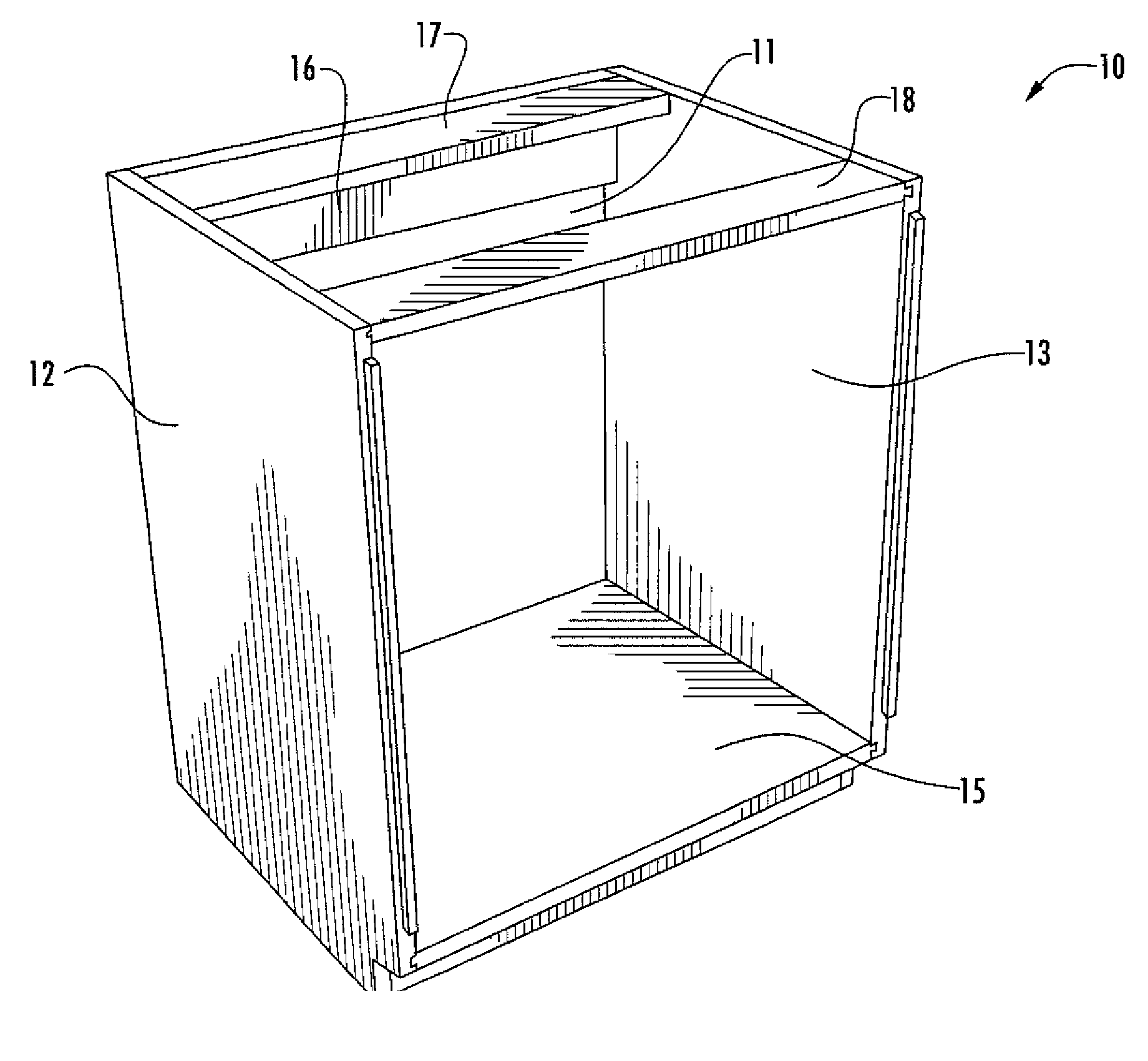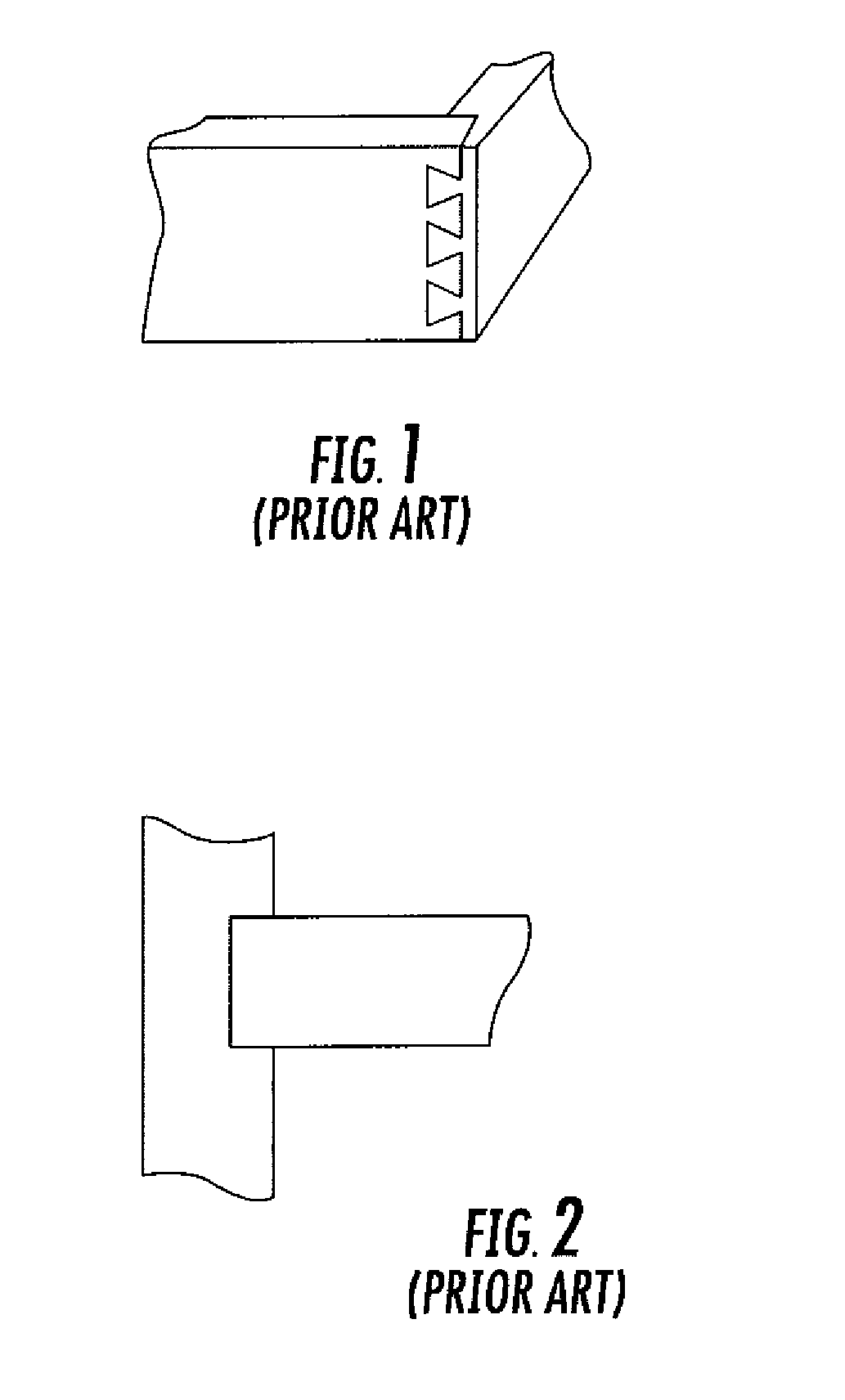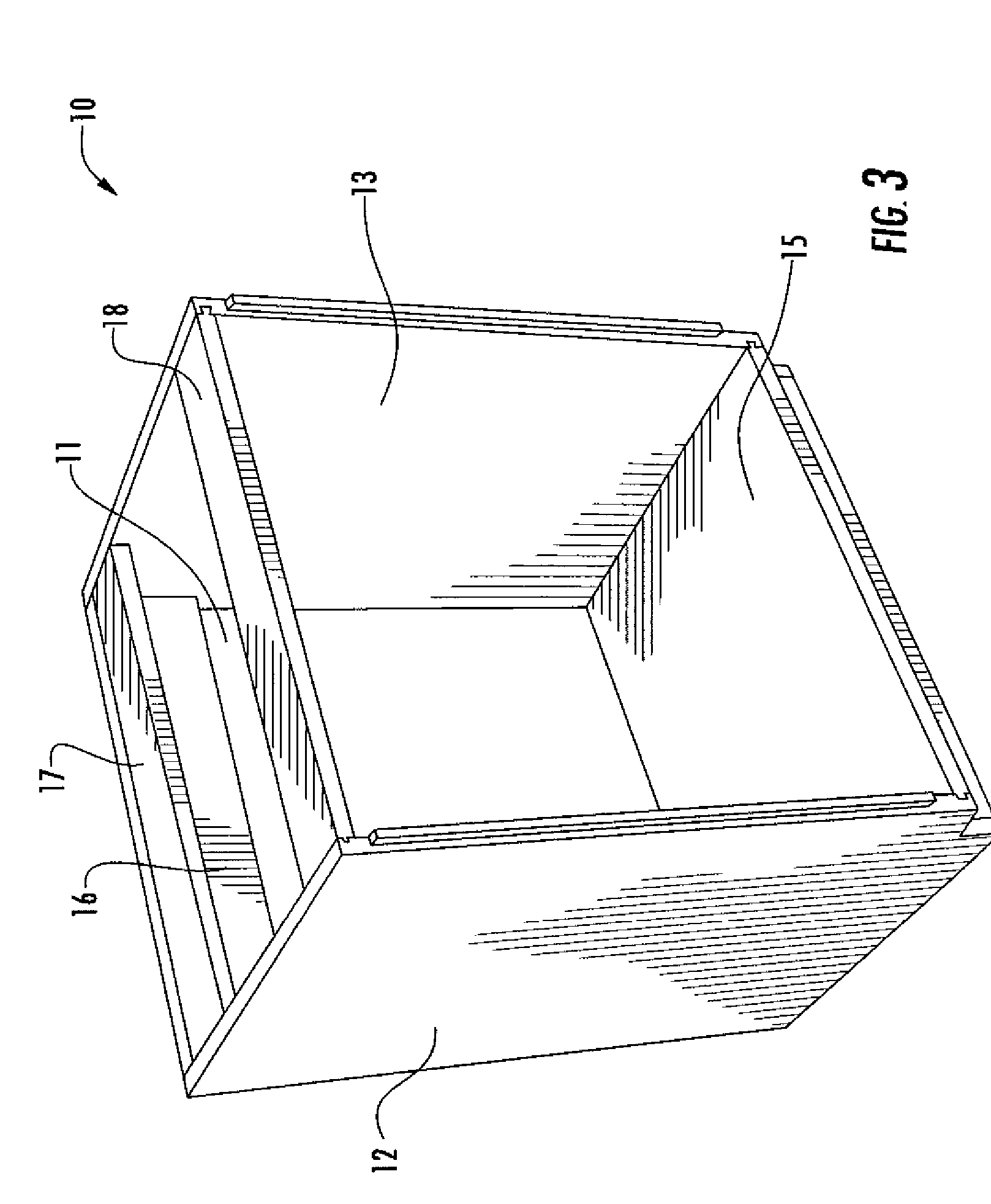Joint for connecting workpieces
a workpiece and joint technology, applied in the direction of couplings, manufacturing tools, rotary cutting tools, etc., can solve the problem of limited application and achieve the effect of reducing adhesive curing time and increasing productivity
- Summary
- Abstract
- Description
- Claims
- Application Information
AI Technical Summary
Benefits of technology
Problems solved by technology
Method used
Image
Examples
Embodiment Construction
[0054] Referring now specifically to the drawings, a joint for securing workpieces together according to an embodiment of the invention is illustrated in FIG. 10 and shown generally at reference numeral 30. The joint 30 includes an outwardly extending projection 31 positioned on a first workpiece 32 and a complementary slot 33 for receiving the projection 31 on a second workpiece 34.
[0055] As shown in FIG. 11, the projection 31 includes a pair of generally convex opposing sidewalls 36 and 37 and an end wall 38. The sidewalls 36 and 37 each include two angled sidewall segments 36A, 36B and 37A, 37B. As illustrated, the sidewall segments 36A and 37A project from the first workpiece 32 at an angle outwardly away from a centerline of the workpiece 32, and the sidewall segments 36B and 37B extend from the distal ends of the sidewall segments 36A and 37A to the end wall 38 at an angle inwardly towards the centerline of the workpiece 32, thereby forming the generally convex profile of the...
PUM
| Property | Measurement | Unit |
|---|---|---|
| Width | aaaaa | aaaaa |
Abstract
Description
Claims
Application Information
 Login to View More
Login to View More - R&D
- Intellectual Property
- Life Sciences
- Materials
- Tech Scout
- Unparalleled Data Quality
- Higher Quality Content
- 60% Fewer Hallucinations
Browse by: Latest US Patents, China's latest patents, Technical Efficacy Thesaurus, Application Domain, Technology Topic, Popular Technical Reports.
© 2025 PatSnap. All rights reserved.Legal|Privacy policy|Modern Slavery Act Transparency Statement|Sitemap|About US| Contact US: help@patsnap.com



